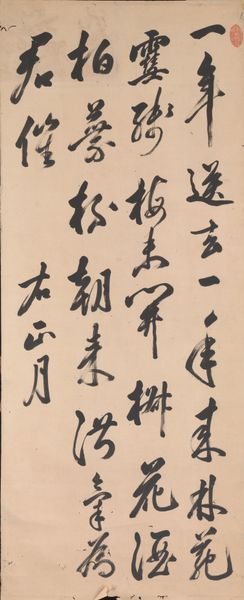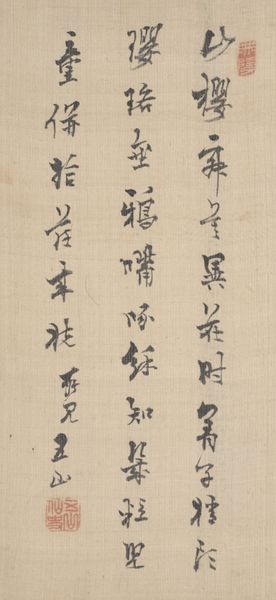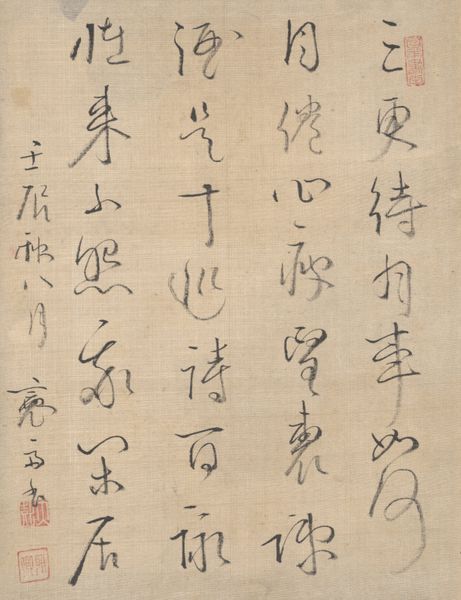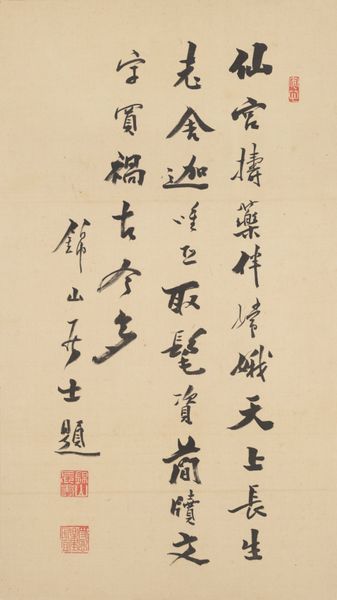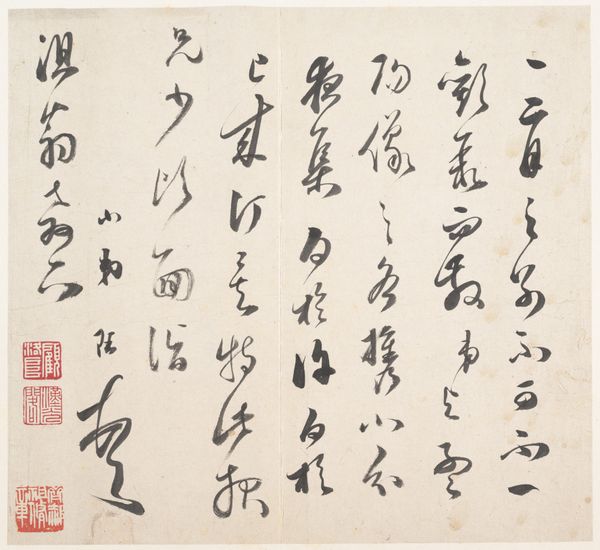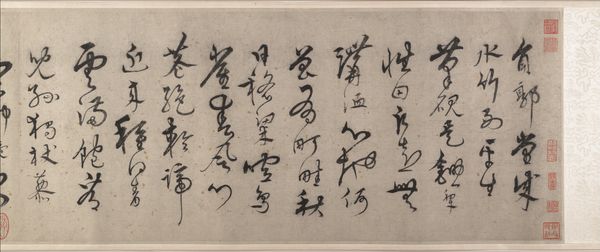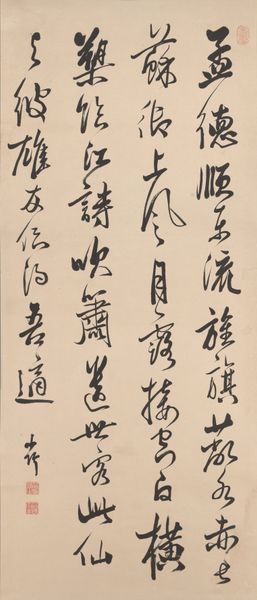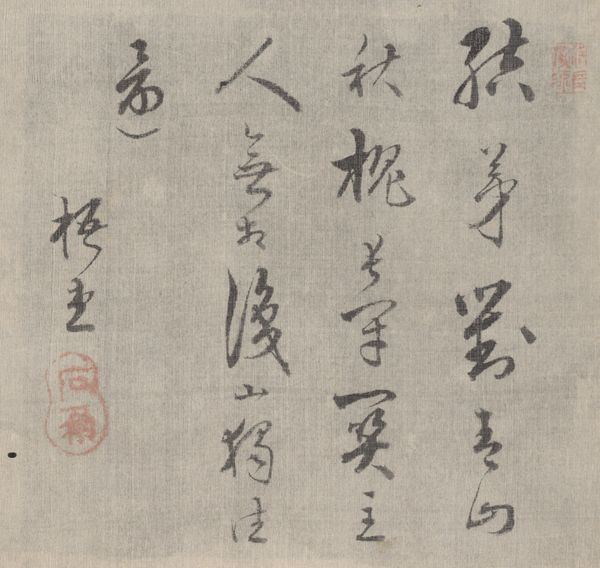
drawing, paper, ink
#
drawing
#
asian-art
#
paper
#
ink
#
calligraphy
Dimensions: 5 3/4 × 5 9/16 in. (14.61 × 14.13 cm)15 1/2 × 21 1/2 in. (39.37 × 54.61 cm) (mount)
Copyright: Public Domain
Curator: So, what’s your initial take on this calligraphic drawing by Gotō Shikkoku, titled "Poetic Couplet?" It's an ink drawing on paper, created sometime between the late 18th and early 19th century. Editor: It strikes me as very grounded. The black ink against the aged paper creates a sense of somber contemplation, almost like witnessing a silent conversation with history itself. Curator: It's interesting that you use the word grounded. Shikkoku's life was deeply enmeshed in the sociopolitical turmoil of his time, so perhaps that heaviness is reflected here. What about the actual text? How does that hit you? Editor: Well, knowing that the artist lived through the Edo period, with its rigid social structures, I can't help but consider whether this text might be interpreted as a subtle form of resistance or a longing for personal expression within those confines. Curator: A very relevant and contemporary observation, really. The work appears relatively simple, but is that intentional, perhaps a commentary? What if the couplet reflects the artist’s own isolation? It's easy to imagine, I think. The deliberate strokes suggest something deeply considered. Editor: Precisely. The very act of creating calligraphy, the precise control required, the mastering of the brush—it’s both an acceptance and a quiet defiance. Each stroke a carefully chosen word in a society that often preferred silence or, at least, prescribed speech. What do you make of the empty space around the characters? Curator: I've often wondered that. Does the negative space amplify the text, or vice versa? It’s a dialogue in itself, really, and the red seal anchors the work visually, while giving it authenticity. Editor: Absolutely. Thinking about it, calligraphy has often been a means of both preserving culture and questioning power, wouldn’t you agree? "Poetic Couplet", like many works of art, acts as a window into a time when people used aesthetics to express complex socio-political views. Curator: A fittingly insightful comment to conclude. I leave thinking that Gotō Shikkoku was quietly using this as a method of catharsis and careful personal and political expression.
Comments
No comments
Be the first to comment and join the conversation on the ultimate creative platform.


